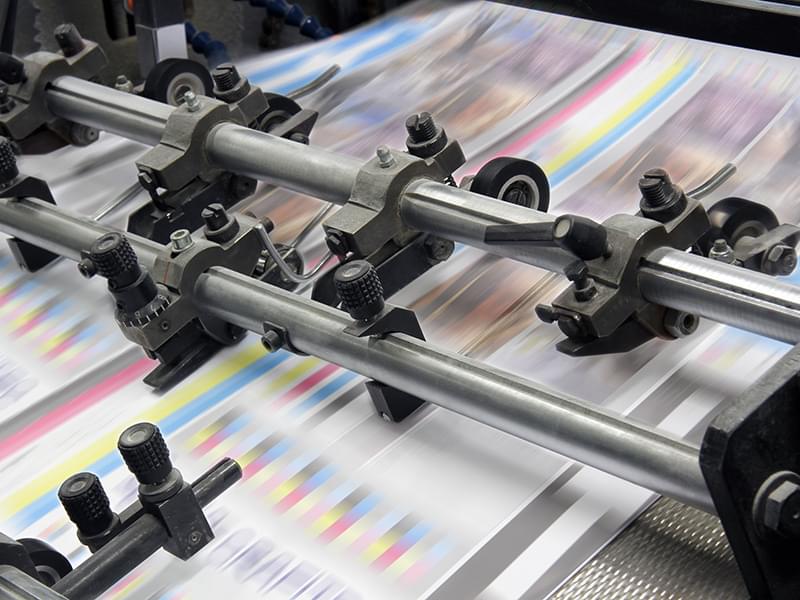The COVID-19 pandemic has accelerated trends in the print equipment market that will create lasting changes in the industry, according to new research from Smithers. A new market report -
The Future of Print Equipment Markets to 2026 – forecasts the 2021 global print equipment market to
reach $15.86 billion, growth of nearly 20% from 2020. The print equipment market is forecast to reach a
value of $15.75 billion by 2026, despite the
market falling in 2020 by almost 24% against the previous year due to COVID-19.
The new in-depth study produced by Smithers examines the
growth of the print equipment market across all
key segments and
geographic regions, and thoroughly investigates the COVID-related economic impact on 2020 and the rate of recovery through 2026. A thorough review of key print equipment segments, including sheetfed offset lithographic, flexographic printing, gravure printing and inkjet printing, is provided in the new research.
Impact COVID-19
COVID-19 has caused the sharp decline in 2020 and will have an enduring effect across all technology sectors and geographic markets. Analogue markets will decline at an increasing rate, and use of digital technologies will increase at an accelerated pace. Some recovery is forecast with sales of most print technologies partially recovering in 2021 as latent demand that had built up in the previous year is released as economies start to emerge from lock down and any other pandemic containment measures. However, sales of analogue equipment will continue to decline from 2026.
Dropping analogue print volumes
Analogue print markets, particularly those most closely aligned to commercial print and publication, were already in decline before the pandemic as consumers increasing chose to access content online. The pandemic has caused a significant and irreversible acceleration to the pace of this change fueled by online services. As a result, print volumes are forecast to decline and the run lengths of whatever physical print is still required will fall. This fall will strongly favour digital printing which will grow, partially at the expense of analogue processes and partly as the variable imaging capability that is inherent in digital print processes creates new markets. Trends will include advertising and promotional messaging aligned to complex campaigns with an increasing online and social media components.
Buoyancy of digital printing
Digital print, with its innate ability to print short run and variable content economically, is generally regarded as a beneficiary of current events, particularly as economies emerge from lock down. This is broadly true, however one of the largest parts of the digital printing equipment market, that for wide format graphics, has been hit hard as it is largely based on event marketing, which came to an abrupt stop as events have been cancelled, and retail advertising which is operating at much lower volumes as retailers closed stores or, in the case of food outlets, reduced their product ranges. There has been a short-term boost to wide format graphic through the production of COVID-19 related signage and floor graphics, however the volumes generated are modest compared to the overall downturn and are, by definition, time limited.
The COVID-19 pandemic is forecast to lead to an acceleration in the transition to digital printing. However, manufacturers of digital presses have been affected by the downturn in 2020, which has led to a fall in revenues. Much of this fall comes from the locked-in consumables supply, and the consequential drop in available investment for new product development.
Prior to the crisis, there was a focus on development of high-speed presses for a variety of packaging and commercial print applications. The view was that digital, particularly inkjet, was well placed take over from analogue in high-volume applications. Many announcements were made, and further press releases were anticipated in early 2020 as manufacturers got ready to launch new platforms at DRUPA. Had this exhibition gone ahead, many new systems would have been on show. These would perhaps have been technology demonstrations rather than final developments, but new systems were expected from a number of manufacturers for several key applications.
Emerging market growth
With sales of $6.16 billion in 2021, Asia has the largest share of the global print equipment market, growing by 0.3% CAGR from 2016. Asia is a region with a mix of growing national markets and those that are mature and shrinking. China is the largest market for print equipment in Asia with just over 46% of the regional sales value in 2021, having grown at a 2.0% CAGR over the previous five years. India is the third largest print equipment market in the region and has also grown from 2016 to 2021, by 0.8% CAGR. Japan, in contrast, declined by 2.9% CAGR% in the five years to 2021, but it is still the second largest print equipment market in the region with a 23% regional share by sales value in 2021.
In contrast, Western Europe and North America, with the next largest shares of the global sales value, are mature markets that have fallen in value over the last five years. Western Europe has seen a decline of 3.1% CAGR, while the sales value in North America shrank by 2.6% CAGR between 2016 and 2021.
